
How to Use LORA_01H: Examples, Pinouts, and Specs
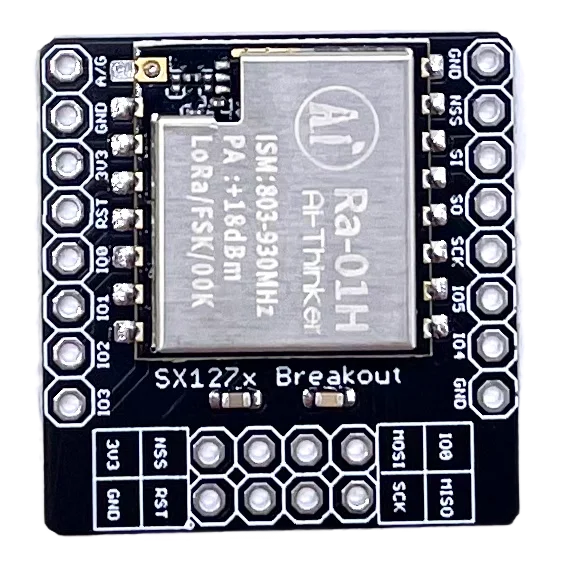
 Design with LORA_01H in Cirkit Designer
Design with LORA_01H in Cirkit DesignerIntroduction
The LORA_01H is a versatile and powerful LoRa (Long Range) module designed for wireless communication over long distances. Operating in the 868-915 MHz frequency range, this module is particularly suitable for Internet of Things (IoT) applications, such as remote sensing, home automation, and telemetry. Its long-range capabilities, coupled with low power consumption, make it an excellent choice for projects where connectivity is crucial, but power resources are limited.
Explore Projects Built with LORA_01H
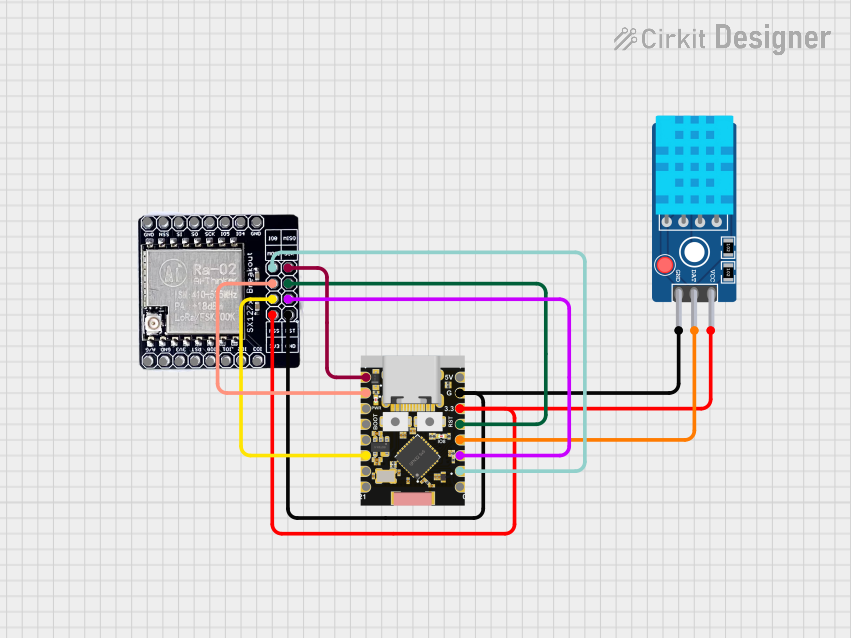
 Open Project in Cirkit Designer
Open Project in Cirkit Designer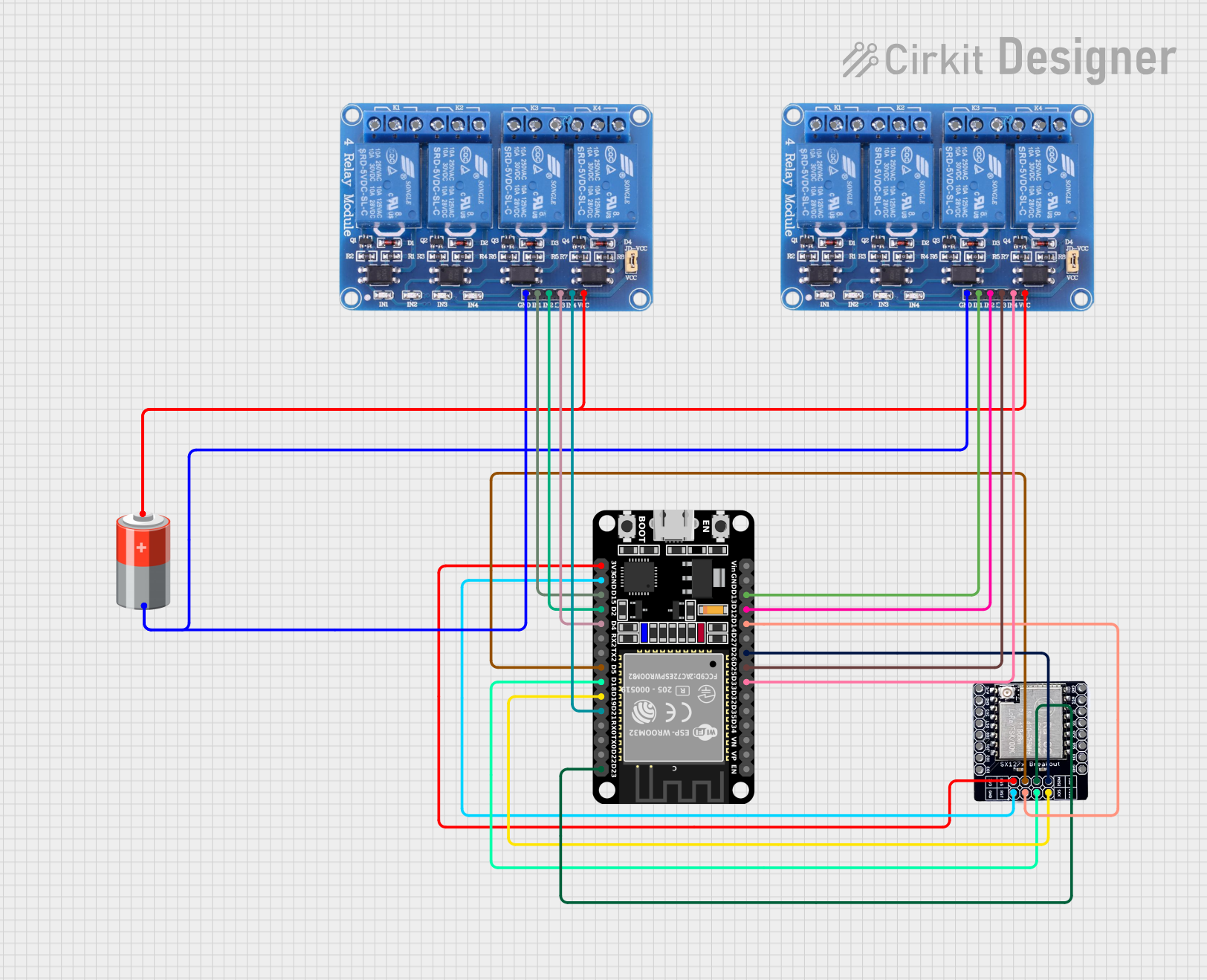
 Open Project in Cirkit Designer
Open Project in Cirkit Designer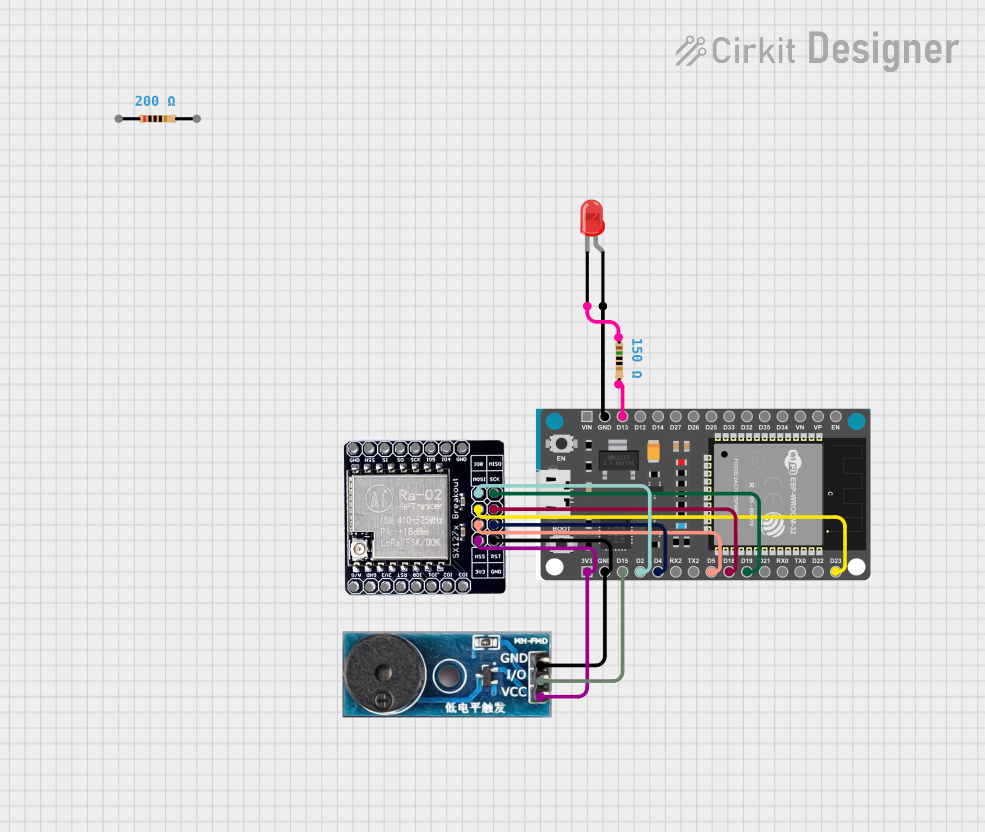
 Open Project in Cirkit Designer
Open Project in Cirkit Designer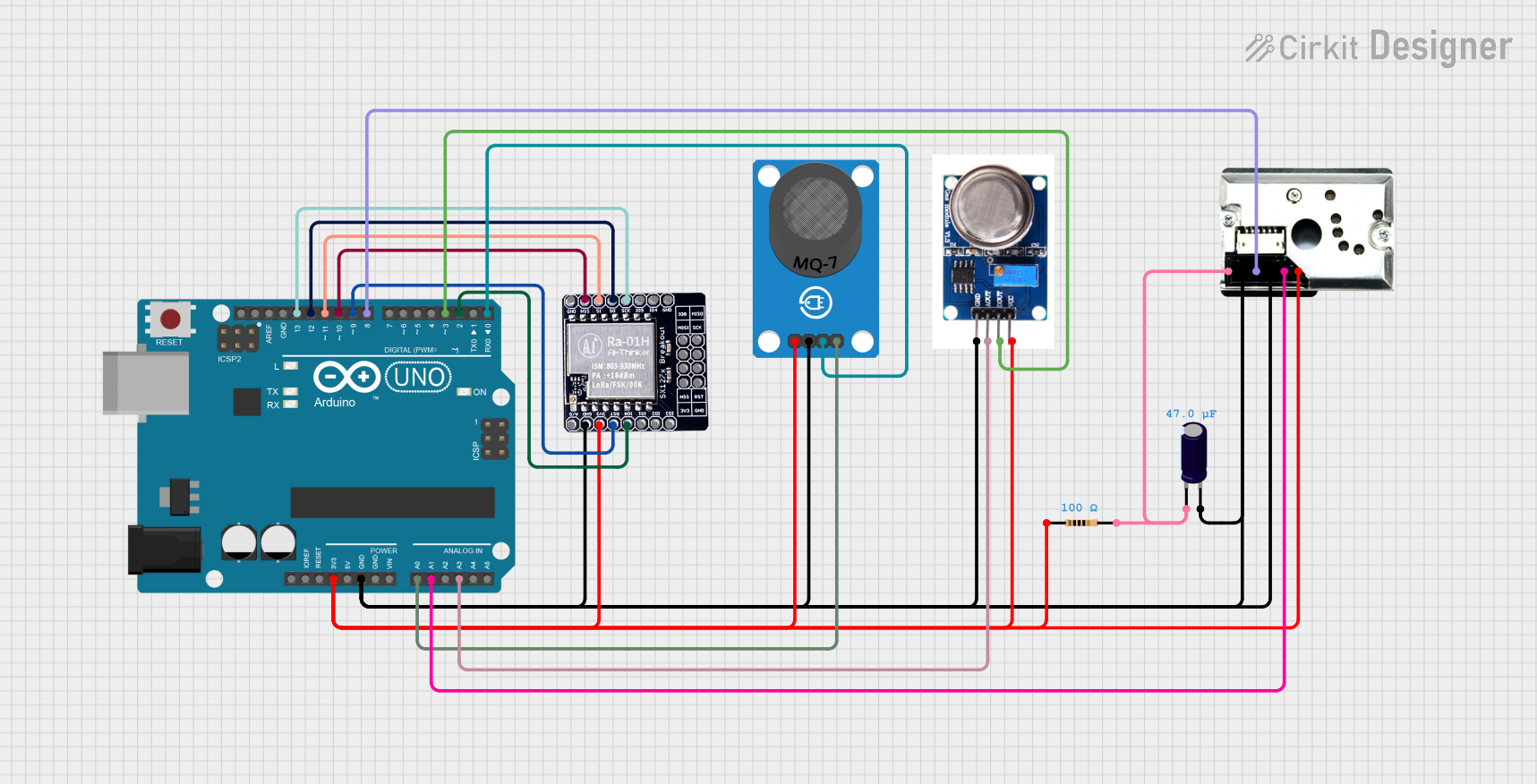
 Open Project in Cirkit Designer
Open Project in Cirkit DesignerExplore Projects Built with LORA_01H

 Open Project in Cirkit Designer
Open Project in Cirkit Designer
 Open Project in Cirkit Designer
Open Project in Cirkit Designer
 Open Project in Cirkit Designer
Open Project in Cirkit Designer
 Open Project in Cirkit Designer
Open Project in Cirkit DesignerCommon Applications and Use Cases
- Remote environmental monitoring
- Smart agriculture
- Asset tracking
- Home and industrial automation
- Smart city infrastructure
- Wireless alarm and security systems
Technical Specifications
Key Technical Details
| Parameter | Specification |
|---|---|
| Frequency Range | 868-915 MHz |
| Modulation | LoRa Spread Spectrum |
| Output Power | +20 dBm - 100 mW nominal |
| Sensitivity | -148 dBm minimum |
| Supply Voltage | 3.3V - 5.5V DC |
| Operating Current | 120 mA (transmit), 10 mA (idle) |
| Interface | SPI |
| Operating Temperature | -40°C to +85°C |
Pin Configuration and Descriptions
| Pin Number | Name | Description |
|---|---|---|
| 1 | VCC | Power supply (3.3V - 5.5V DC) |
| 2 | GND | Ground |
| 3 | SCK | SPI Clock |
| 4 | MISO | Master In Slave Out (SPI Data Output) |
| 5 | MOSI | Master Out Slave In (SPI Data Input) |
| 6 | NSS | SPI Chip Select (Active Low) |
| 7 | DIO0 | Digital I/O (used for interrupt signaling) |
| 8 | RST | Reset (Active Low) |
Usage Instructions
How to Use the Component in a Circuit
- Power Supply: Connect the VCC pin to a 3.3V - 5.5V DC power source and the GND pin to the ground of your circuit.
- SPI Interface: Connect the SCK, MISO, MOSI, and NSS pins to the corresponding SPI pins on your microcontroller (e.g., Arduino UNO).
- Interrupts: Connect the DIO0 pin to an interrupt-capable GPIO pin on your microcontroller to handle events such as packet reception.
- Reset: The RST pin can be connected to a GPIO pin for software reset functionality.
Important Considerations and Best Practices
- Ensure that the power supply is clean and within the specified voltage range to prevent damage.
- Use proper decoupling capacitors close to the module's power supply pins to minimize power supply noise.
- Keep the antenna area clear of metal objects to avoid interference with the RF signal.
- Follow local regulations regarding the use of RF frequencies and power levels.
Example Code for Arduino UNO
#include <SPI.h>
#include <LoRa.h>
// Define the LoRa module pins
#define SS_PIN 10
#define RST_PIN 9
#define DIO0_PIN 2
void setup() {
// Initialize LoRa module
LoRa.setPins(SS_PIN, RST_PIN, DIO0_PIN);
if (!LoRa.begin(915E6)) { // Initialize LoRa at 915 MHz
Serial.println("Starting LoRa failed!");
while (1);
}
}
void loop() {
// Send a message
LoRa.beginPacket();
LoRa.print("Hello, LoRa!");
LoRa.endPacket();
// Wait for a short interval before sending the next message
delay(2000);
}
Troubleshooting and FAQs
Common Issues Users Might Face
- No Communication: Ensure that the SPI connections are correct and that the module is properly powered.
- Short Range: Check the antenna connections and ensure there are no obstructions or interference sources nearby.
- Intermittent Operation: Verify that the power supply is stable and that the module is not overheating.
Solutions and Tips for Troubleshooting
- Double-check wiring, especially the SPI and power connections.
- Use an oscilloscope to verify the SPI signals if communication issues persist.
- Ensure that the antenna is properly tuned for the operating frequency.
FAQs
Q: Can I use the LORA_01H module with a 5V microcontroller like the Arduino UNO? A: Yes, but ensure that the logic level for the SPI interface is shifted down to 3.3V to avoid damaging the module.
Q: How can I increase the range of the LORA_01H module? A: Use a high-quality antenna, minimize obstructions, and ensure that the module is configured for maximum transmit power and sensitivity.
Q: What is the maximum data rate of the LORA_01H module? A: The data rate can vary depending on the spreading factor and bandwidth settings, but it typically ranges from 0.3 kbps to 27 kbps.
Q: Is the LORA_01H module compatible with other LoRa devices? A: Yes, it is compatible with other LoRa devices as long as they operate on the same frequency and use compatible settings.